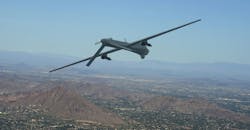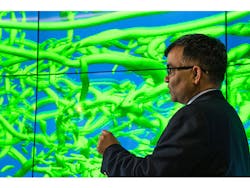Unmanned aerial vehicles (UAVs) are becoming a more significant part of both military and civilian life. Those future UAVs serving the U.S. Army may also turn out to be somewhat quieter than current models, if a new research agreement between the ride-sharing company, Uber, and the Army leads to advances in unmanned rotorcraft being developed for the armed forces. Uber recently announced that it has signed a Cooperative Research and Development Agreement with the Army to advance technologies supporting Future Vertical Lift.
“The research that we will collaborate with Uber to do will actually deliver unprecedented capability for quieter rotor systems in a unique configuration,” said Dr. Jaret Riddick, director of the U.S. Army Research Laboratory’s Vehicle Technology Directorate. In mentioning Future Vertical Lift and its importance to future U.S. Army unmanned forces, Riddick explains: “The emphasis within Future Vertical Lift is toward future rotorcraft or helicopters, but also a future fleet of unmanned aerial vehicles, UAVs, commonly known as drones.”
Army researcher Dr. Rajneesh Singh reviews the modeling and simulation challenges in developing quieter UAVs. (Photo courtesy of the U.S. Army and David McNally)
One goal of this research agreement is to pave the way for a silent fleet of future UAV soldiers. The Army is also hoping that the research helps to shorten or do away with runways altogether while adding to payload capability. A great deal of importance is being placed on the unmanned soldiers of the future, with the hope that the technical advances will also benefit commercial aviation.
“We have extensive experience in rotorcraft aero-mechanics,” said Dr. Rajneesh Singh, a team leader in the ARL’s Vehicle Technology Directorate (see figure). “By definition this is a very multi-disciplinary field. It requires expertise in different technical areas and we have such a group.”
“ARL is one of the nation's premier rotorcraft research centers,” added Rob McDonald, head of Uber’s Vehicle Engineer Team. “Together we’ll be working on stacked co-rotating rotor development.”
About the Author
Jack Browne
Technical Contributor
Jack Browne, Technical Contributor, has worked in technical publishing for over 30 years. He managed the content and production of three technical journals while at the American Institute of Physics, including Medical Physics and the Journal of Vacuum Science & Technology. He has been a Publisher and Editor for Penton Media, started the firm’s Wireless Symposium & Exhibition trade show in 1993, and currently serves as Technical Contributor for that company's Microwaves & RF magazine. Browne, who holds a BS in Mathematics from City College of New York and BA degrees in English and Philosophy from Fordham University, is a member of the IEEE.


